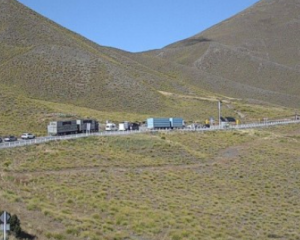
And if the hospital did not receive significant additional funding in the meantime, it was likely services there would need to be reduced, he warned.
Mr Kane said he appreciated the Southern District Health Board (SDHB) was proposing a new health model to direct more people to primary healthcare, and the broader health system was "currently under scrutiny as SDHB consider their model of care before designing their new hospital [in Dunedin] and deciding what to do in the longer term for the Wakatipu basin".
"In an ideal world, those issues would be resolved before we [COHSL] planned for our increasing demands, but we can’t wait," Mr Kane said.
"The increasing pressure on our assessment unit and our ward mean we need to plan ahead just to cater for the increasing demand."
It was possible an upgrade of Dunstan Hospital could be delayed if more people were "kept out of hospital", but the upgrade would still be needed eventually and planning for increased use and capacity was needed, he said.
COHSL, the operating company of Dunstan Hospital, had studied the hospital’s future capacity and was developing a business case, Mr Kane said in the recently released 2016-17 annual report for Central Otago Health. The study included an inquiry into "opportunities to keep people out of hospital and possibilities for redesigning service delivery to identify ways of delaying the need for increasing capacity".
Only after that was completed did the study begin to identify when additional facilities at Dunstan would be needed, it said.
"Management and staff are working their way through the suggestions identified during the project so we can delay the need for increased capacity as long as possible. However, it still appears we will need to extend our facilities within the next four years."
Mr Kane said COHSL was "currently discussing this [need for expanded facilities] with SDHB".
"We’re warning the DHB well in advance, hoping that they can make provision for it."
The Otago Daily Times approached the SDHB for comment but none was received.
Mr Kane said the two areas where Dunstan was "most stretched" were in its two-bed assessment unit and the hospital ward. The two assessment beds were not enough, and this was further straining the already busy ward, if people had to be provided with ward beds while waiting to be assessed.
Dunstan would like to expand the assessment unit to 6-8 beds, and build another ward wing, of possibly 12 beds.
At present Dunstan has 24 beds. Bed days have risen 9.2% from the previous financial year, from 6514 in 2015-16 to 7111 in 2016-17. In the past five years, bed days per annum have increased by 22%.
Demand for community services, including district nursing, and allied health services had also been increasing. The district’s increasing and ageing population was behind the increases and Dunstan had "run out of options" for cost-cutting, Mr Kane said. More money would be needed next financial year to avoid reducing services.
He did not say which services could be reduced.COHSL recorded a $43,061 deficit for the 2016-17 financial year.
Spending included $43,000 on the business case for the hospital, Mr Kane said.
"If we exclude this expenditure, the result for the year is a break-even position ... this is an extraordinary achievement given our total budget is $12 million and reflects the tight management control of our finances across the organisation."












